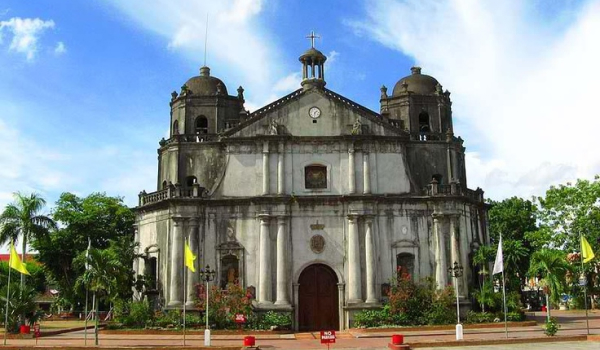
As of 2016, the Archdiocese of Caceres had 1,686,930 baptized Catholics, representing 95.20 percent of all 1,772,300 people in the territory.
Evangelization and the First Parishes
More stable evangelization efforts came with the Spanish Franciscans in 1578. Assigned to the Bicol Region were Friars Pablo de Jesus and Bartolome Ruiz.
In the same year, consolidating the gains of previous missions, the two Franciscans established no less than four parishes: Naga, Quipayo, Nabua and Bula. Thus, "Tierra de Camarines" came to be more permanently a Franciscan mission, remaining so till the end of the Spanish regime in the Philippines.
With the establishment of the first four parishes, came a more focused attention of ecclesiastical governance. Thus, while the Franciscan chronicler, Friar Francisco Ribadeneira, OFM, wrote of early Bicol as being "most temperate, docile and modest...," most open to the Gospel in the archipelago, Bishop Andres Gonzales, OP of Manila (1685-1709) would denounce the exploitation of the people and other such social ills committed in the name of Christianization and conquest by government officials and even churchmen.
Further, till this time, the parishes of "Tierra de Camarines" were governed from Manila by P. Santiago de Castro, with such difficulties of administration and vicissitudes of travel that distance entailed.
The Church of Caceres
Against this backdrop, the Diocese of Nueva Caceres was established as the suffragan of Manila on Aug. 14, 1595. This was by virtue of the Papal Bull "Super specula militantis ecclesiae" issued by Clement VIII. The diocese extended over "the provinces of Camarines and Albay as far as and including the islands of Ticao, Masbate, Burias and Catanduanes; the province of Tayabas as far as and including Lucban; and, in the contracosta of Mauban to Binangonan, Polo, Baler and Casiguran." The official name given to the ecclesiastical jurisdiction was "Ecclesia Cacerensis in Indiis Orientalius." The name taken from "Ciudad de Caceres" also indicated the seat of the diocese. Friar Luis de Maldonado, OFM, was appointed the first bishop of the Diocese of Nueva Caceres.
The period following the erection of the diocese saw crucial transitions in the histories of both the Church and state, from the Philippine Revolution to the Philippine Republic, from an evangelization colored by colonization to Filipinization. Prominent in Bicol were:
|
There are 2 Catholic universities, 4 colleges, 4 technical/vocational, 11 high schools, 14 elementary, 20 kindergarten, 14 preparatory and 20 nursery schools. There are many other non-sectarian and public schools in the province. While the province is well known as a center of educational development, those who have been educated here find a mismatch between what training they receive in schools and what the economic sector requires.